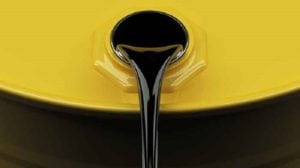A rising oil price – led by OPEC’s commitment to capping output that was announced last month – has seen the oil price climbing steadily since, adding 3% yesterday (10 November).
The global chief investment strategist at the world’s largest asset manager said in a recent note that the OPEC plan was seen as a strategic shift by Saudi Arabia away from a battle for market share.
He said: “We see less risk of a renewed oil price plunge and the potential for a gradual rise toward long-term equilibrium levels around $60 per barrel, where supply and demand are likely to find a better balance. A spike beyond that level is unlikely as some sidelined oil producers would then have incentives to ramp up production.”
Turnill added the oil price declines of 2015 and early 2016 had contributed to market volatility, while hurting both emerging markets and high-yielding assets.“An effort to rebalance the oil market is important because it should help support energy companies, risk appetite and reflation trades,” he said.
With Brent crude reaching a 2016 high yesterday, Ian Forrest, investment research analyst at The Share Centre, said it hinted at positive dividend action for the oil majors, namely Royal Dutch Shell and BP.
He said: “OPEC may put quotas in place when it meets next month but there is uncertainty around what level of production Iran will agree to. Given that shale oil has made the US, which is not a member of OPEC, the world’s largest oil producer, the ability of the cartel to control global prices is not as strong as it once was.
“All of this is relatively encouraging for investors in the sector, but the rise must be sustained to have any meaningful impact. Our preferred stocks remain the two major integrated groups, Royal Dutch Shell and BP, which continue to pay attractive dividends and are suitable for investors seeking a lower/medium risk approach. The rise in the oil price reduces the chances of those two companies cutting dividend payments, but it needs to remain above $60 to provide more certainty of that.”
BlackRock’s Turnill added that remaining risks included failure of various OPEC members to see through their promise, increased production by non-OPEC nations and renewed weakness in global demand.“Higher oil prices would reinforce current market trends based on reflation: rising long-term bond yields and a shift out of perceived safer assets − bond proxies and low-volatility stocks − and into cyclical assets such as emerging markets. Within energy equities, we favor quality and low-cost producers. We prefer inflation-linked bonds to treasuries.”







